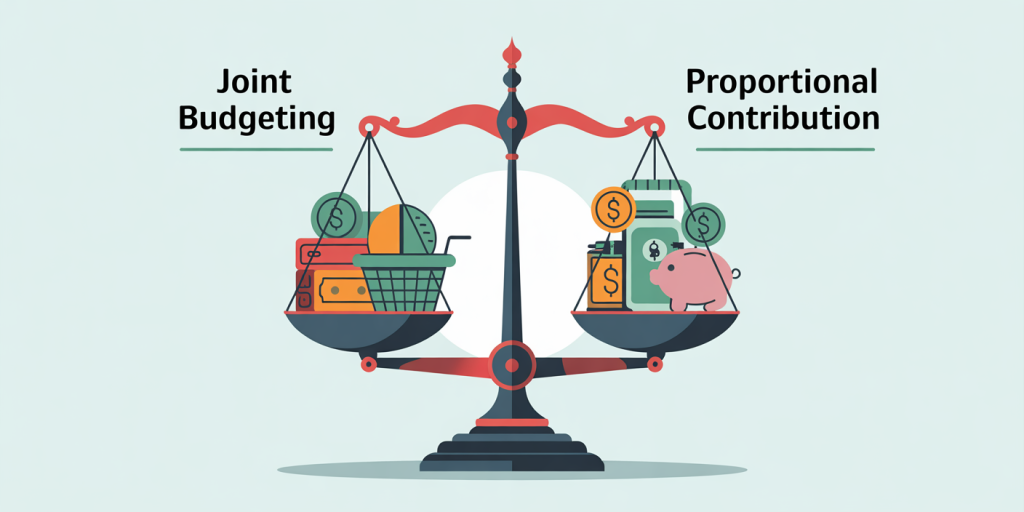Financial Planning for Couples: Building Wealth as a Team
Navigating finances as a couple presents both opportunities and challenges. Combining two financial lives requires not only trust and transparency but also strategy and collaboration. When managed effectively, financial planning for couples can lead to significant wealth accumulation and a stronger bond. According to a 2023 survey by Northwestern Mutual, 63% of couples who engage in joint financial planning report higher relationship satisfaction. This article explores practical strategies and insights to help couples build wealth together through thoughtful, coordinated financial planning.
Why Unified Financial Planning Matters for Couples
Financial decisions impact both partners, making coordination essential. Money disagreements rank among the top causes of stress in relationships, with 35% of couples citing finances as a major source of conflict, according to CNBC’s 2022 study. Financial planning helps mitigate these conflicts by aligning goals and creating accountability.
Unified planning provides several benefits. First, it fosters transparency, eliminating hidden debts or expenses. Second, pooling resources can optimize investments and savings potential, as combined income often unlocks better lending rates or investment opportunities. Finally, it ensures both partners are on the same page for major financial milestones such as buying a home, retirement planning, or funding children’s education.
Consider the example of Sarah and James, a couple married for four years. Initially, they handled finances separately and faced repeated misunderstandings about spending habits. When they consulted a financial advisor and started budgeting together, they created a joint emergency fund and set clear objectives for paying off student loans and saving for a house down payment. Their collaborative approach reduced stress and accelerated their financial progress.
Establishing Shared Financial Goals
Creating shared financial goals is the cornerstone of successful wealth building. Couples need to discuss and define both short-term and long-term objectives, ensuring mutual buy-in.
Start by identifying key priorities such as debt elimination, savings targets, retirement plans, and lifestyle aspirations. For example, a couple may agree to save $20,000 within two years for a vacation while simultaneously contributing to a 401(k) plan monthly.
A practical framework to set goals can follow the SMART criteria (Specific, Measurable, Achievable, Relevant, Time-bound). Let’s illustrate this with a comparative table outlining two types of goals.
| Goal Type | Example | SMART Criteria Applied |
|---|---|---|
| Short-term | Save $5,000 emergency fund in 12 months | Specific: amount and deadline set; Measurable: track savings monthly |
| Long-term | Accumulate $500,000 retirement fund by age 65 | Relevant: retirement-focused; Achievable considering current income |
According to Fidelity’s 2024 retirement insights, couples who collaboratively plan tend to save 30-40% more toward retirement than those who do not. This highlights the power of unified goal setting.
Creating a Collaborative Budget and Expense Tracking System
Budgeting as a couple requires compromise and transparency. The key is to create a system where both partners are comfortable and informed about spending and saving habits.
Several budgeting methods exist; couples should select one that fits their lifestyle. Common approaches include: Joint Budgeting: Combining incomes and expenses into a single plan. 50/30/20 Rule: 50% for needs, 30% for wants, 20% for savings and debt repayment. Proportional Contribution: Each partner contributes to joint expenses based on income share.

For example, Lisa and Mark use proportional contribution. Mark earns 70% of their combined income, so he contributes 70% to shared bills, while Lisa covers 30%. This method promotes fairness without burdening one partner disproportionately.
Tracking expenses consistently is equally important. Emerging technologies deliver powerful tools for couples, such as apps like YNAB (You Need A Budget), Honeydue, or Mint, which allow synchronized account access and notifications to track spending habits.
Below is a simplified budgeting comparison table illustrating two popular approaches:
| Budgeting Method | Description | Pros | Cons |
|---|---|---|---|
| Joint Budgeting | Pooling all income and expenses | Simplifies money management | May cause friction over spending styles |
| Proportional Sharing | Contributions based on income | Fair division of expenses | Requires honest income disclosure |
Using any system consistently helps couples stay financially aligned and reduces surprises that might damage trust.
Managing Debt Together and Building Credit Strength
Debt management often poses a challenge, especially if one partner carries significant liabilities. Building wealth requires a clear strategy for paying down debt and building credit scores as a team.
One successful method is the snowball approach, where couples focus on paying off smaller debts first to gain momentum, then tackle larger balances. Alternatively, the avalanche method targets the highest interest rates first, saving on interest over time.
For instance, Alex and Maria combined their debts and decided to follow the avalanche method since Maria’s credit card accrued 18% interest while Alex’s student loan was at 5%. Prioritizing Maria’s card allowed them to minimize costly interest early.
Equally important is enhancing credit profiles. Joint accounts can build credit together, but it is essential to monitor and avoid missed payments. According to Experian’s 2023 report, couples with complementary credit scores tend to qualify for better loan terms, impacting their ability to purchase homes or secure favorable interest rates.
Opening a secured credit card jointly or becoming authorized users on each other’s accounts can also help build credit history. The key is responsibility and communication to avoid financial pitfalls.
Planning for Retirement and Long-Term Wealth
Retirement planning is a vital aspect of couples’ financial planning, and collaboration enhances outcomes. As life expectancies lengthen—currently averaging 77 years for men and 81 years for women in the U.S. (CDC, 2023)—planning for increased retirement duration is essential.
Couples should assess both partners’ current savings, expected social security benefits, pensions, and investment returns. Combining retirement accounts while understanding tax implications can maximize withdrawals and reduce fees.
A practical step is setting target retirement ages and required annual savings. For example, a couple aiming to retire at 65 with expected expenses of $60,000 per year might use financial calculators or advisors to determine they need roughly $1.5 million saved by retirement, considering a 4% safe withdrawal rate.
Comparing two hypothetical couples shows varying impacts of early and coordinated retirement planning:
| Aspect | Couple A (No Coordination) | Couple B (Coordinated Planning) |
|---|---|---|
| Annual Savings Rate | 8% of combined income | 15% of combined income |
| Retirement Savings at 65 | $900,000 | $1.8 million |
| Retirement Income | Limited lifestyle adjustments | Comfortable retirement lifestyle |
Data from Vanguard’s 2023 report on retirement readiness emphasizes that couples who engage in regular financial reviews and adjust plans accordingly are 50% more likely to meet retirement goals.


Future Perspectives: Embracing Financial Growth Together
As couples jointly manage finances, staying adaptable is crucial. Economic conditions, career changes, family dynamics, and life goals evolve. Couples who revisit their financial plans annually or during life transitions—such as having children, job shifts, or relocation—are better positioned for sustained wealth growth.
Technological advancements continue shaping household financial management. The rise of AI-driven financial advisors, automated investing platforms tailored to couples, and integrated financial management apps empower couples with deeper insights and hassle-free management.
Demographic trends also suggest more couples opting for alternative financial arrangements such as separate accounts with shared expense frameworks or investing in socially responsible portfolios aligned with mutual values.
Continued education on financial literacy remains a foundation. According to the National Endowment for Financial Education (NEFE), couples who actively educate themselves through workshops or courses experience fewer financial conflicts and increased net worth over time.
Financial planning is not static; it is a dynamic, teamwork-driven process. Successful couples embrace open communication, leverage tools, and stay informed to build wealth harmoniously. By treating financial planning as a shared mission rather than a chore, couples can transform money management into a source of strength and security for their joint future.
